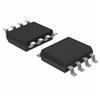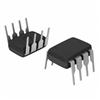TL7705: DescriptionThe main part of this circuit TL7705 is a reference voltage source, which consists of a very stable, temperature-compensated band gap reference. An external capacitor (typ. 0.1 mF) must b...
floor Price/Ceiling Price
- Part Number:
- TL7705
- Supply Ability:
- 5000
Price Break
- Qty
- 1~5000
- Unit Price
- Negotiable
- Processing time
- 15 Days
SeekIC Buyer Protection PLUS - newly updated for 2013!
- Escrow Protection.
- Guaranteed refunds.
- Secure payments.
- Learn more >>
Month Sales
268 Transactions
Payment Methods
All payment methods are secure and covered by SeekIC Buyer Protection PLUS.

 TL7705 Data Sheet
TL7705 Data Sheet






